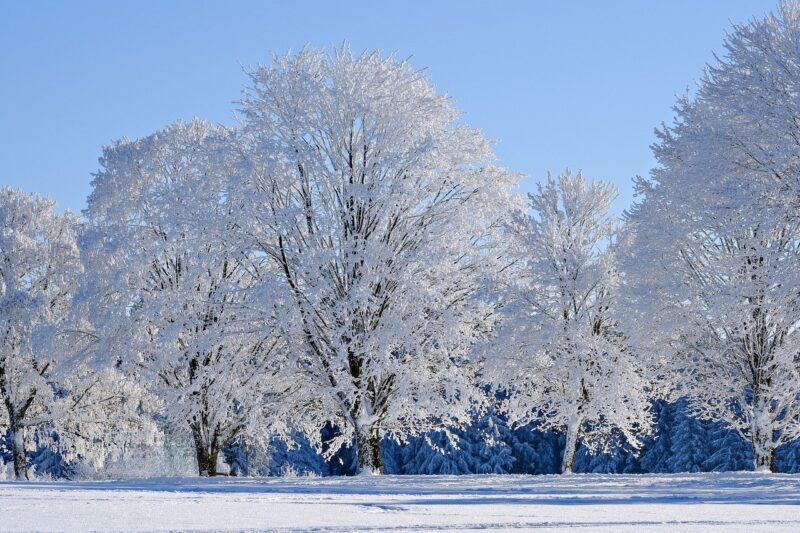The Story of the Devil’s Footprints: What Left These Marks in the Snow?
November 12, 2024

In the winter of 1855, a chilling mystery unfolded across the snowy landscapes of Devon, England. This was no ordinary snowfall but rather the backdrop for one of the most baffling phenomena ever recorded—the Devil’s Footprints. As the snow lay untouched, residents awoke to discover a bizarre trail of footprints leading across rooftops, around buildings, and over fences. The peculiar patterns stretched over a mile and sparked rumors and folklore that have survived to this day.
1. The Mysterious Appearance of the Footprints
The footprints first emerged during the night of February 8-9, 1855, in the town of Exmouth. However, the phenomenon quickly spread across a significant area, including towns like Sidmouth and Topsham. Witnesses reported the impressions resembling a series of cloven hooves, measuring approximately eight inches long and three inches wide.
Curiously, the tracks appeared to have been made by a single creature, which was puzzling considering the extensive distance they covered. What was even more perplexing was the absence of any other footprints or disturbances in the snow that could explain how this creature traversed such varied terrain.
2. A Journey through Terrifying Theories
Naturally, the emergence of the Devil’s Footprints elicited various theories. Some residents immediately speculated about the involvement of the Devil or a demonic presence. The odd shoeprint-like impressions stirred the imagination of the Victorian public, leading to wild theories including:
- The Devil Himself: Some locals believed the markings were literal signs of the Devil’s presence, connecting the footprints to folklore that described his ability to visit Earth in the form of a creature that left no other traces behind.
- Satanic Rituals: A more sinister theory suggested that the footprints were remnants of dark rituals performed by a cult in the area, possibly aimed at summoning supernatural forces.
- An Escape from the Inferno: Others speculated that the creature might have escaped hell, leaving behind its marks as it traversed the earthly realm in search of freedom or vengeance.
Despite the fervor of such theories, no evidence could support any of these claims.
3. The Logical Explanations: From Cats to Kangaroos
Scientists and skeptics eventually stepped in to unravel the mystery, proposing more logical explanations for the bizarre footprints. Some of the prominent theories included:
- Large Animals: Various experts suggested that the patterns could have been made by animals, speculating possibilities like a large dog or a goat. In an era devoid of a comprehensive understanding of animal behavior and tracking, such suggestions made sense to skeptics.
- Possibility of Hoax: Another theory postulated that the footprints were a well-orchestrated hoax. Some attributed the tracks to local pranksters attempting to create a spectacle, fueled by the tensions between the rural and the growing urban populations of the time.
- Kangaroo Footprints: The idea that the footprints could belong to an escaped kangaroo from a nearby circus or zoo became popular. This explanation, while entertaining, was challenged as kangaroos are not indigenous to the region and wouldn’t logically travel far from their enclosure.
Though skeptical arguments emerged, none of the explanations fully accounted for the ubiquity of the footprints across various landscapes without a logical path.
4. Cultural Impact and Modern-Day Discussion
The mystery of the Devil’s Footprints endures to this day, inspiring many theories and discussions about myths and folklore associated with the supernatural. The incident has been referenced in various forms of media, ranging from literature to television shows that explore the unexplained.
Interestingly, this event has become emblematic of how folklore intertwines with human experiences of uncertainty and terror. The footprints embody the era’s intersection of science and superstition, showcasing the social dynamics within Victorian society, where rumors spread rapidly, often faster than facts.
Many continue to find joy in exploring the supernatural, fueling local ghost tours and engaging in discussions about what truly occurred that fateful winter. Whether as a cautionary tale or a source of entertainment, the story of the Devil’s Footprints remains a memorable chapter of folklore.
5. A Continued Legacy
Today, the footprints have become a legend in their own right, contributing significantly to the historical tapestry of ghost stories and urban legends in the UK. As residents of the region recount tales of eerie encounters and strange happenings, the legacy of the Devil’s Footprints remains a testament to the power of storytelling and the human desire to explain the unexplainable.
From the tales that surround them to the cultural discussions they continue to inspire, these remnants in snow have captured imaginations for generations, reminding us that not all mysteries are solved by science and that sometimes, the truth lies in what we believe.
Conclusion
The Devil’s Footprints represent more than just a peculiar imprint left in the snow—they reflect the deep-seated connections we have with the mysteries of our surroundings. Though scientific scrutiny may never conclusively resolve this enigma, the exploration of folklore and collective memory demonstrates our inclination to seek explanations in the face of the unknown. The enduring narrative of the footprints serves as a poignant reminder that the stories we share have the power to shape both our perceptions of reality and our understanding of the world around us.






